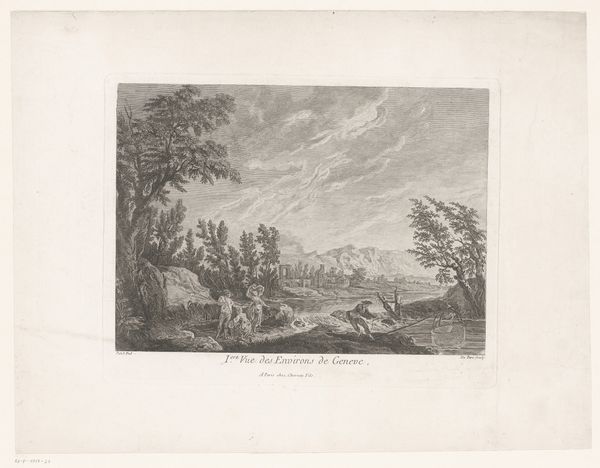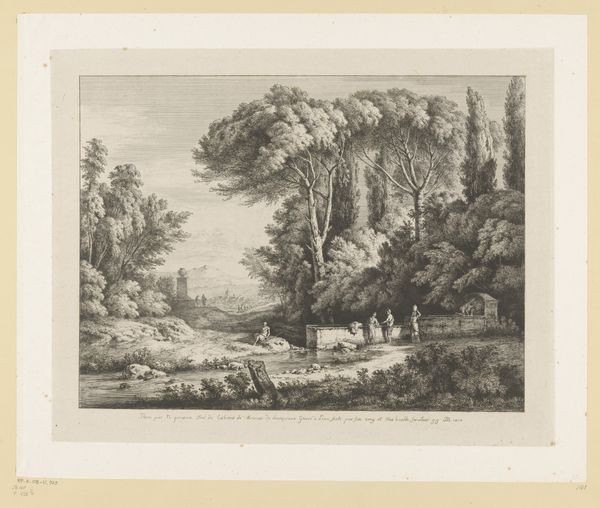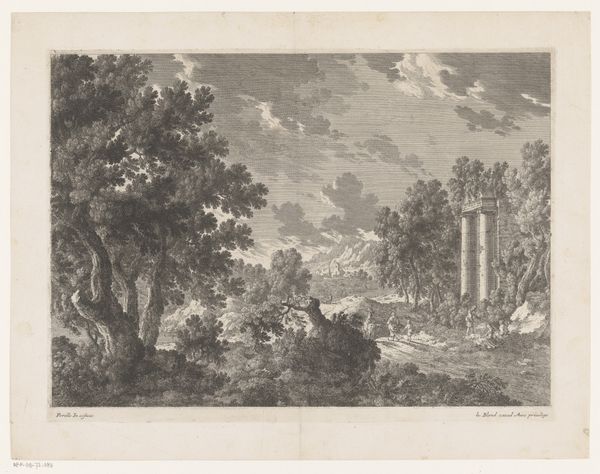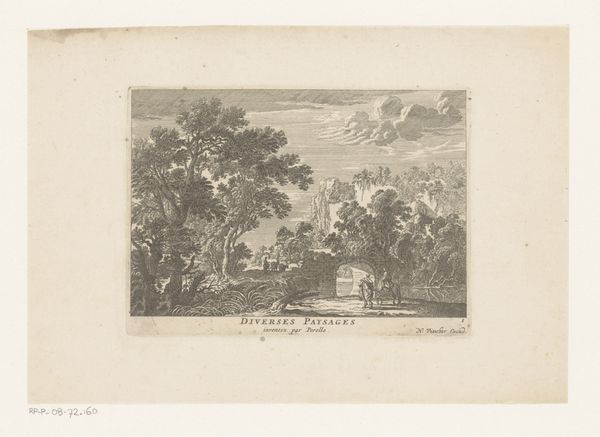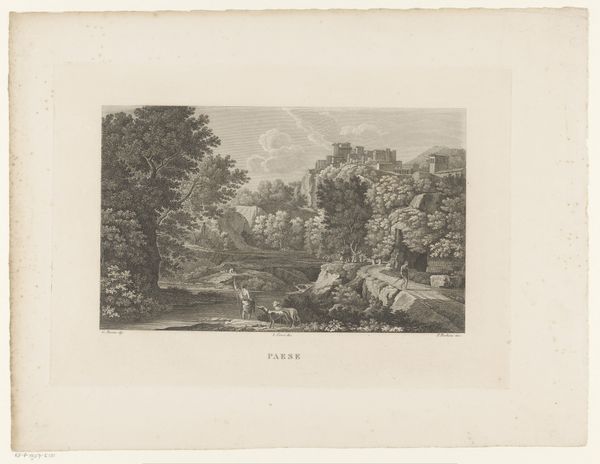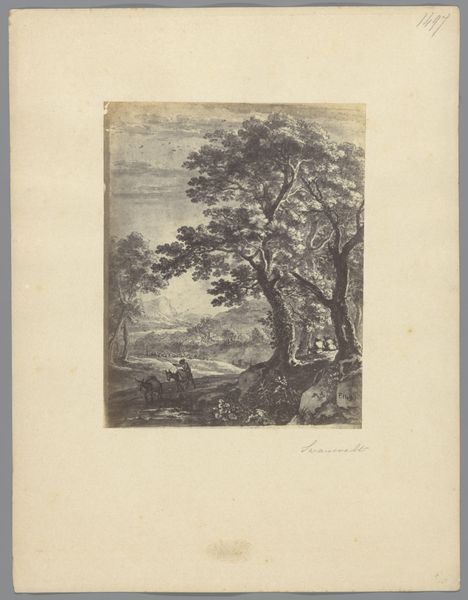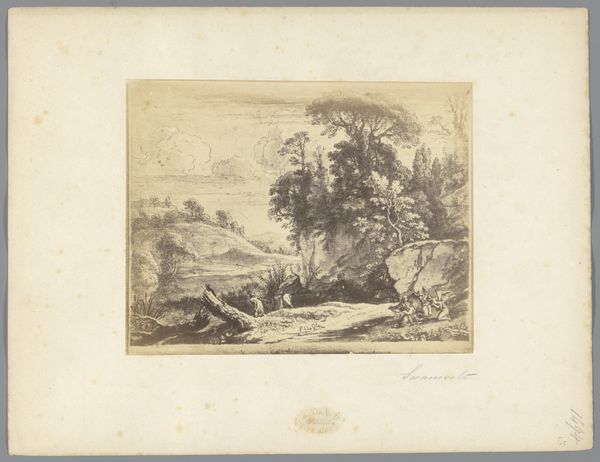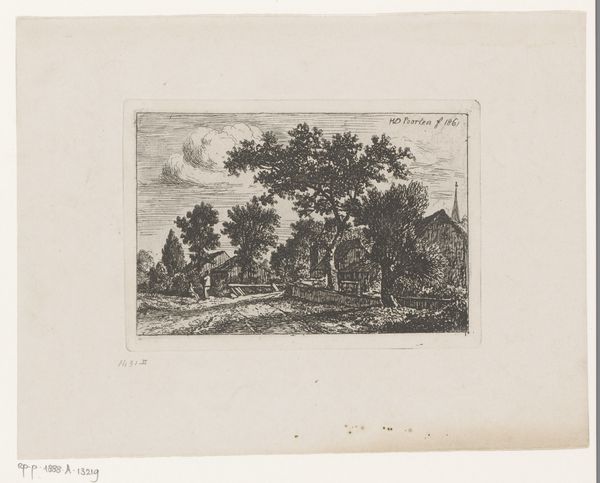
Landschap met Egyptische sfinxen, obelisken en antieke bouwwerken op de achtergrond 1787
0:00
0:00
drawing, ink, engraving
#
drawing
#
neoclacissism
#
ink painting
#
pencil sketch
#
landscape
#
ink
#
linocut print
#
cityscape
#
watercolour illustration
#
history-painting
#
engraving
Dimensions: height 235 mm, width 203 mm, height 414 mm, width 289 mm
Copyright: Rijks Museum: Open Domain
Curator: Here we have a drawing titled "Landschap met Egyptische sfinxen, obelisken en antieke bouwwerken op de achtergrond" from 1787, an ink and engraving work by Cesare Massimiliano Gini. Editor: My initial thought is it has an unusual tranquility, considering the clashing architectural styles. It is sepia-toned, soft, and seemingly etched with great delicacy. What was Gini working with here? Curator: Gini primarily used ink and engraving for this work. The engraving would have allowed for the creation of very fine lines, almost a wispy effect in the foliage. The choice speaks to the period's fascination with reproducing detail. Editor: Precisely. The density of that detail in the vegetation—almost feels like an obsessive cataloging. You can almost sense the artist’s labor in that replication. The production seems aligned with the burgeoning print culture, more accessible means of disseminating knowledge and visual experience. Curator: And that blending is no accident. Sphinxs evoke a time when the memory of Egypt and its connection with other Mediterranean civilisations would represent a nostalgic revival in visual culture during that period. Gini deliberately intertwined classical antiquity with Egyptian motifs, possibly suggesting shared cultural roots or an idealised past. Editor: Do you think this idealized vision served a particular social function for Gini's contemporaries? An elite ideal? Curator: Most probably. It speaks to the long shadow the classical world cast. It offers the suggestion of control and ordering, particularly when industrial production started gaining its importance and disturbing earlier means of social relation. This need can be represented and addressed through this image, the symbol becomes something for the bourgeois eye to admire. Editor: So we can say this "landscape" is less about nature and more about constructing a visual argument for continuity. The artistic process mirroring a yearning for a world becoming ever more distant. Curator: Exactly. Through familiar forms, this art offers a reassuring vision during a period of change. Editor: Yes, it’s more than just landscape; it's an archaeological dig through visual codes, revealing a lot of historical production value from that period, now accessible to a modern lens.
Comments
No comments
Be the first to comment and join the conversation on the ultimate creative platform.

